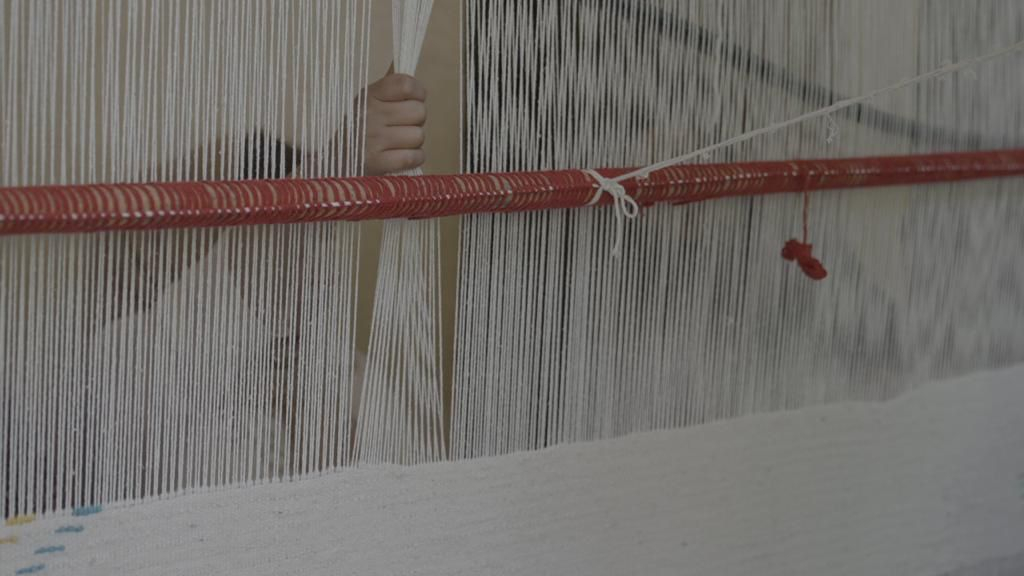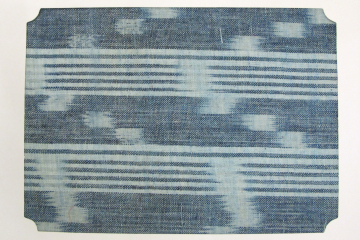Ritmoepistemologías
The first opening of the research project set in motion by Carolina Jiménez and Lorenzo Sandoval will be held at 7.00 pm on 4 October. We will be joined at the event by Tania Adam, Ethel Baraona Pohl, Erick Beltrán, Paula García-Masedo and Toni Navarro, who will be sharing some of the vectors of their respective contributions to the project.
Ritmoepistemologías (Rhythmepistemologies) is a research project that incorporates various definitions extending from and towards the notion of rhythmanalysis, as put forward by the French author Henri Lefebvre. With this concept, Lefebvre proposed tools to infer the ways in which rhythms modulate the world, thereby overcoming the binarism of two not necessarily diverging forms: that of a linear rhythm – which tends to impose itself through industrial manufacturing and the extractivist exploitation of bodies and territories – and that of a circular rhythm, which corresponds to cycles of nature such as the movement of constellations or the beating of the heart. Taking this proposition as its basis, Ritmoepistemologías seeks to recognise, reproduce and publish patterns – be they sound, choreographic, textile, visual or textual – as a methodology of research in the form of collaborative study and expanded writing. In a context in which multiple juxtaposed timeframes exist, we propose various forms of production that make it possible to work from the starting point of difference.
Detailed programme
A luta continua… en cualquier lugar (The Struggle Continues… Wherever), Tania Adam
These poems are a succession of shocking autobiographical scenes: sensations, portraits, images and incidents that left their mark on a young Black African girl following her departure from Maputo in July 1985. Hostile and symbolic events that consign her to a perpetual state of otherness, reminding her that she does not belong anywhere. Her words evoke silenced acts of violence, singular experiences and hidden frailties for which she feels a sense of guilt, not understanding that the place where she lives is unprepared for someone like her. Traumas foreign to the collective imaginary engraved on her body and ignored by others due to an inability to collectivise. Her destiny is shaped by the silence that becomes ingrained in her skin, leaving a constellation of open wounds and pain, the trace of a constant search for commonality. A long-distance race in which the boundaries between space and time are blurred, where the past bursts into the present, and the present and the future gradually sketch themselves using the ink of the past.
Tania Adam (Maputo, Mozambique, 1979) lives in Barcelona and is the founder of the Radio Africa cultural platform for critical thinking and the dissemination of Black arts and cultures. She works as a journalist, curator and researcher. In her multidisciplinary work, she explores Black diasporas, their movements and resistances, and popular African music. Through her writings – cultural critique and autobiographical poetry – she injects alternative accounts about the continent of Africa and the heterogeneity of negritude into the collective imaginary.
Rapeando escepticismo, cantando optimismo (Rapping Scepticism, Singing Optimism), Ethel Baraona Pohl
Cities are – and always have been – settings for new forms of appropriation. Since 2008, in this post-financial-crisis Europe, urban musicians have been singing of their discontent, appropriating the same tools of the system they question, wearing designer-label clothes and luxury accessories, driving the latest-generation cars and generally using as their stages iconic buildings that are, on the one hand, ruins of this era of financial speculation and, on the other, spaces of opportunity in which it is possible to envisage new narratives and other imaginaries that will help us to reclaim the agency we each have in the urban environment.
(This piece is based on the text ‘The explicit-lyrics City’ by dpr-barcelona, and the Selling Bricks project by Bartlebooth.)
Ethel Baraona Pohl (preferred pronouns they/them) is a critic, writer and curator, as well as a co-founder, with César Reyes, of the independent research studio and publishing house dpr-barcelona, which operates in the fields of architecture, political theory, and the social milieu. Their curatorial practice includes, among others, ‘Twelve Cautionary Urban Tales’ (Matadero Madrid, 2020-21); and more recently, ‘Llibres Model’ a curated book collection and open library (Model, Barcelona Architectures Festival 2022 and 2023). Ethel is Senior Assistant at the Chair of Architecture and Care in the Department of Architecture ETH Zürich. Ethel believes that publishing is a political act, and reading, a form of resistance.
Vivir la vida con esa ropa (Living Life in These Clothes), Paula García-Masedo
In a documentary, Yohji Yamamoto displays a book of photographs of working-class people posing in front of the camera. They’re wearing reality, not just clothing but reality, he says. There’s a strangeness, a mystery in the pictures, in which the clothing shown is identifiable yet at the same time unreal, incomprehensible. The British press of the day spread the word that the former leader of the Labour Party Michael Foot wore the same donkey jacket as the miners who clashed with uniformed police in 1984 and as the workers on the Manchester Ship Canal in 1888, the same jacket also worn by teddy boys and skinheads. A jacket is something as broad as a garment with two sleeves and an opening that can be closed at the front of the torso, and as specific as an object placed on particular bodies at particular times and places. The names of jackets vary according to their cut and fabric: cuts and fabrics have swapped between the upper classes and the working classes and more – between soldiers and civilians, the colonised and colonists, between people of different gender orientations – in more or less exact repetitions. Every pattern and its genealogy encapsulates fragments of a blurred history that proves incomprehensible, just as in Yamamoto’s images. This contribution seeks tracks and traces in a subset of that group of items we term ‘jacket’ and specifically in those termed ‘men’s jackets’, as well as tracks and traces associated with the class divide and the distribution of power that goes with it.
Paula García-Masedo is an artist. Her artistic practice is situated at the intersection between territory, material culture and political and affective history. Through her work, she addresses the perceivable expression of material, with material here taken to be a situated element linked in genealogies and which exists immersed and forming itself in specific aesthetics. She studied on the Independent Studies Programme run by MACBA and architecture at the Polytechnic University of Madrid. Her work has been shown at numerous galleries and museums, among them CA2M (Madrid), La Casa Encendida (Madrid), TEA (Santa Cruz de Tenerife), CentroCentro (Madrid), Blueproject Foundation (Barcelona), Fabra i Coats (Barcelona), Batalla (Santa Cruz de Tenerife), Bapore Atelier (Balmaseda, Vizcaya), Centre Cívic Sant Andreu (Barcelona), Twin Gallery (Madrid) and the Museo de Arte Contemporáneo de Madrid. Her work is held in the collections of the Community of Madrid and MAC (Madrid City Council) and in the DKV Collection. She cofounded the independent space Pols (Valencia) and codirected it until 2022. She has curated exhibitions at the CentroCentro (Madrid), the LIGA DF (Mexico City) and Monoambiente (Buenos Aires) galleries and at the COAM (Architects’ Association of Madrid). She is a university teacher and writes regularly. Her writings include two books published by Caniche Editorial.
Superposición (versión radio) (Superposition [radio version]), Erick Beltrán
In this contribution, Erick Beltrán selects (and adds) some elements of his piece Superposition, begun at the Liverpool Biennial in 2021. In it, he uses classic Cumbia music from Latin America as an introduction to concepts fundamental to the ‘Quantum Theory of the Cumbia Image’, a blend of iconology, ontology, Heisenberg’s uncertainty principle and the way we describe the tension between the subject and the collective. While deconstructing the rhythm of Cumbia, in this contribution he brings together ideas of proprioception (the body’s ability to perceive its own position in space), quantum physics, psychopomps (the mechanisms that accompany souls to the afterlife) and the collective psyche. This narrative is constructed from different paths of knowledge modulated by rhythms and speeds, including our perception of frequency, harmonics, the limit of what we regard as the body and dream states.
In his work, Erick Beltrán (Mexico City, 1974) focuses on researching and reflecting on the concept of publishing and the constructions of discourse, and employs various formats such as drawings, photographs, maps and objects. He is interested in the way information circulates and is organised, conditioning our understanding of the world, and in language and our relationship with knowledge: his diagrams, plans and visual systems are attempts to explain the world. His work has been shown in solo shows at documenta fifteen, Kassel (2022); the Museo Experimental el Eco, Mexico City (2021); the Museo de Arte Contemporáneo La Tertulia, Cali (2017); the New Museum, New York (2014); and the Museo Tamayo, Mexico City (2014). His work has also been included in collective exhibitions at the Liverpool Biennial (2021), the Centro Botín, Santander (2019) and the Yinchuan Biennial (2018), among others.
Coreografías infraestructurales de la IA (Infrastructural Choreographies of AI), Toni Navarro
Artificial intelligence, like electricity and telecommunications, has brought about a profound material reorganisation of the world. Firstly, it has become a key geopolitical factor which, over and above the technological competition between countries, generates new architectures of governance with their own territories and sovereignties. With regard to the economy, these systems extend from production processes to global logistical distribution networks, which has led to a considerable change in the way capital is accumulated. And as for cities, it has also had a major impact on urban planning and the development of mobility services, with the future establishment of the smart city in mind. In all these realms, the increased volume of data and faster processing have enabled AI systems to record, monitor and predict all kinds of flows: information, energy, transport, people, goods, money and power. Hence the issue of rhythm is crucial for revealing the ways in which AI organises politics, the economy and cities in an invisible infrastructural dance.
Toni Navarro is a philosopher who specialises in feminist theories of technology. He is part of the Sociotechnical Conceptualisation Vector under the aegis of the Technopolitics Unit of the Internet Interdisciplinary Institute (IN3/UOC). He has been a guest lecturer at EINA University School of Design and Art of Barcelona (Barcelona University) and Elisava Barcelona School of Design and Engineering (UVic-UCC). He has recently translated and written prologues to the books Nuevos vectores del xenofeminismo, by Laboria Cuboniks (Holobionte Ediciones, 2022), and La terraformación, by Benjamin Bratton (Caja Negra, 2021). He has also written the prologues to the books Xenofeminismo, by Helen Hester (Caja Negra, 2018), and La guerra de deseo y tecnología (y otras historias de sexo, muerte y máquinas), by Sandy Stone (Holobionte Ediciones, 2020). In addition, he has translated the writings of various women authors for the collection Ciberfeminismo. De VNS Matrix a Laboria Cuboniks (Holobionte Ediciones, 2019).




